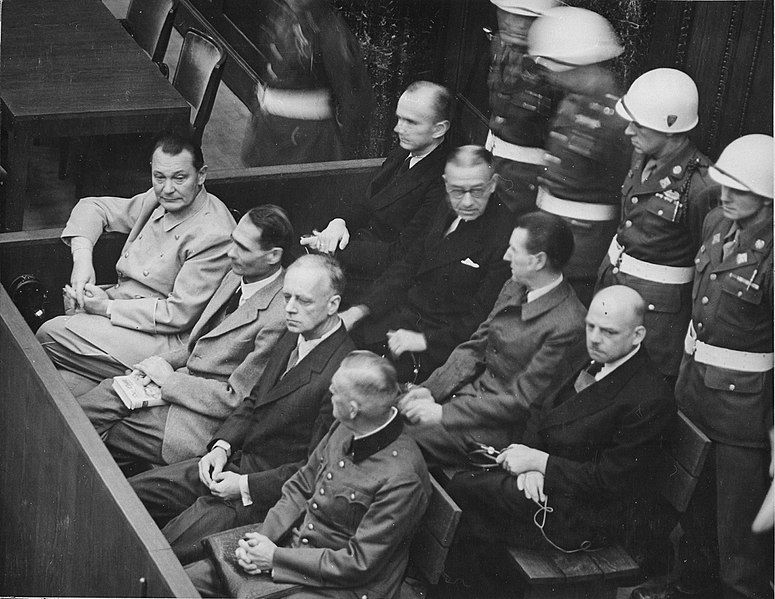DNA analysis proves the Spandau ‘doppelgänger conspiracy’ to be wrong
In May 1941, Adolf Hitler’s wartime Deputy Führer, Rudolf Hess, flew solo from Germany to Scotland in an attempt to hold peace talks with the Duke of Hamilton. Hess’ plan failed and, at the 1946 military tribunals in Nuremberg, he was sentenced to life imprisonment for crimes against peace. Along with six other Nazis, Rudolf Hess was incarcerated in Spandau allied military prison in the British section of Berlin. Hess committed suicide on 17 August 1987 at the age of 93, having been the sole prisoner of the Berlin jail since the release of Albert Speer and Baldur von Schirach in 1966.
However, for decades doubts have swirled over whether the prisoner designated ‘Spandau No. 7’ really was Hess. The Spandau ‘doppelgänger conspiracy’ was perpetuated by a British army physician and one-time Spandau doctor, Hugh Thomas. Thomas, who penned the 1979 book The Murder of Rudolf Hess, insisted that the prisoner purporting to be Hess did not bare scars corresponding to the wounds Hess sustained – in particular, being shot through the left lung – during the First World War. Aside from missing scars, the British surgeon also contends that the plane – a new ME 100 – Hess was flying did not have the fuel capacity to make a direct flight to Kilmarnock.
The Spandau ‘doppelgänger conspiracy’ was perpetuated by a British army physician and one-time Spandau doctor, Hugh Thomas
Recently, however, the longstanding World War II conspiracy theory – a theory to which even President Franklin D. Roosevelt was a leading subscriber – has been debunked by DNA.
A retired military doctor from the US army and a forensic scientist from Austria were able to track down a blood sample from ‘Spandau #7’ and compare it to Hess’ relatives still living in Germany. The results from the subsequent DNA study show that there is just a 1% chance that the blood did not belong to the Nazi deputy fuhrer and therefore debunk the imposter theory.
In 1982, as part of a routine check-up, a blood sample was taken from Hess by a US army doctor, Phillip Pittman. Rick Wahl, a former US army pathologist and one of the study’s authors, mounted some of the blood on a microscope slide to perform a cell count.
A retired military doctor from the US army and a forensic scientist from Austria were able to track down a blood sample from ‘Spandau #7’
Dr Sherman McCall was working in the Walter Reed Army Medical Centre in Washington when, in the mid-1990s, he first learned that his colleague Rick Wahl had once worked at Spandau and had brought back the hermetically sealed blood smear for teaching purposes. Despite this, it was not until years later – when McCall became aware of the historical controversy surrounding Hess’ identity – that he asked to use the slide, labelled “Spandau #7”, to learn the truth.
Jan Cemper-Kiesslich, a molecular biologist in the DNA Unit at the Interfaculty Department of Legal Medicine, University of Salzburg, Austria, extracted DNA from the dried blood and the pair then hunted down a living male relative of Hess, whose identify they are careful to protect, to see if it was a match.
According to the New Scientist, which first reported on the study, the relative agreed to give a DNA sample and the team compared it with that of Spandau No. 7, looking at DNA markers – such as microsatellites (SSRs) and single nucleotide polymorphisms (SNPs) – across the genome.
A molecular biologist in the DNA Unit at the Interfaculty Department of Legal Medicine extracted DNA from the dried blood
The researchers looked particularly at the Y chromosome. “Usually the DNA markers that are used for paternity testing don’t work out for distant relatives. But on the other hand we knew that both sample donors shared a common parental line,” recalled Cemper-Kiesslich. The forensic scientist added, “Persons with an unbroken parental line display the same set of DNA markers on the Y chromosome.” Statistical analysis of the results showed that there was a 99.99% likelihood that the two people from whom the blood samples were taken were related.
The research, which was published in the journal Forensic Science International: Genetics, concludes that it is virtually certain “that prisoner ‘Spandau #7’ was indeed Rudolf Hess, the Deputy Führer of the Third Reich.” The authors added that the “The conspiracy theory claiming that prisoner ‘Spandau #7’ was an imposter is extremely unlikely and therefore disproved.”
There was a 99.99% likelihood that the two people from whom the blood samples were taken were related
Dr Turi King, the geneticist at the University of Leicester who led the forensic examination of the body of the last Plantagenet king of England, Richard III, told New Scientist “They’ve got a perfect match with the Y chromosome and a living male Hess relative… If this person was a doppelgänger, you wouldn’t get that match, so from that point of view it’s a good sign.”
Walther Parson, a forensic molecular biologist at Innsbruck Medical University in Austria, commented “The manuscript underwent review by two anonymous reviewers. I have no reason to assume that the data and science are not sound. I know the scientists are great.”

Comments
Comments are closed here.